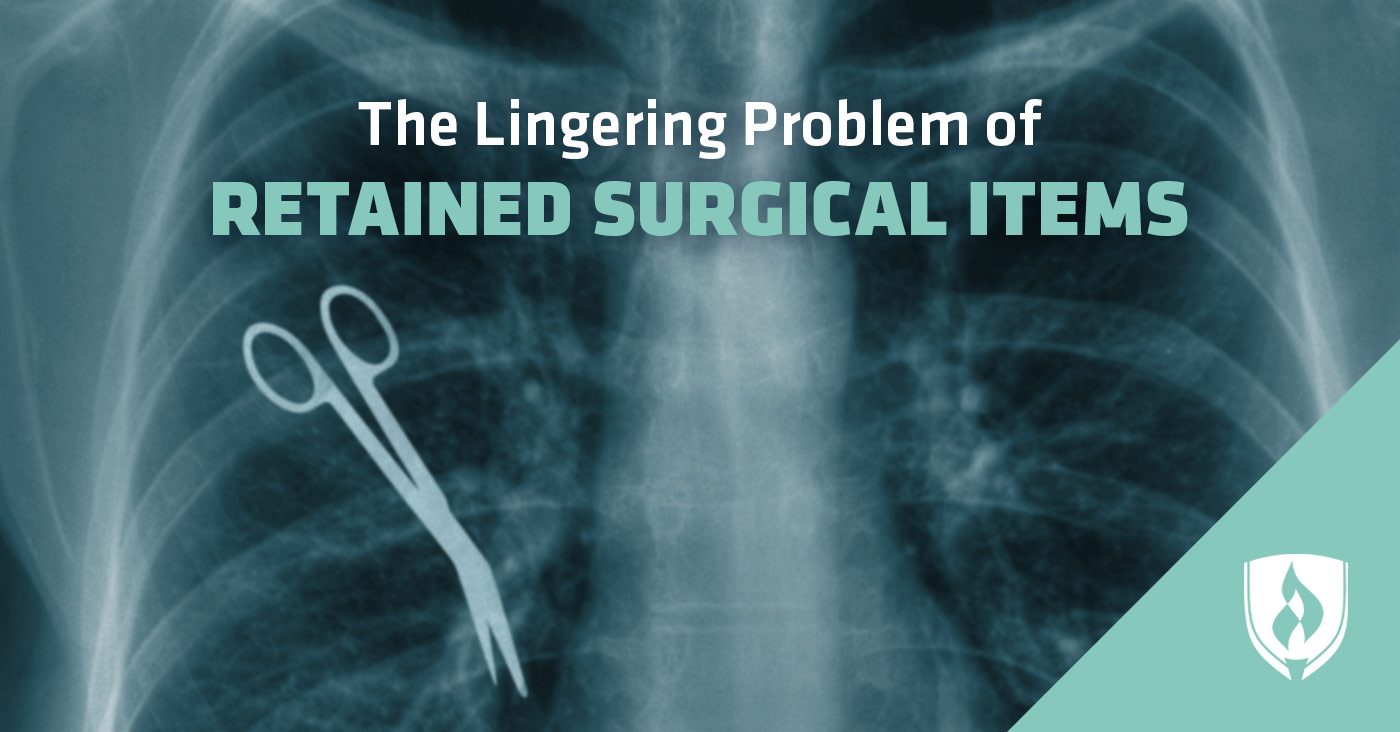
Imagine this. There you are in the operating room, standing over a patient mid-surgery. Between the surgeons, assistants, operating nurses and you, it’s a full house. You’re in the process of wrapping up the surgery when somehow amongst the many hands and tiny instruments, a needle, sponge or other medical item gets left behind inside the patient. Years later, the patient returns to the hospital with severe medical complications, only to discover the culprit: a retained surgical item.
Despite advancements in medicine and surgical techniques, retained surgical items continue to be a problem in the medical community. Read on to learn how items get left behind, what the cost is for the community and what you can do about it.
The consequences of retained surgical items
There are roughly 4,000 reported annual cases of retained surgical items in the United States, but other studies suggest the numbers may reach as high as 6,000. Two-thirds of retained surgical items are sponges, but needles, scalpels, clamps, broken pieces of surgical devices and scissors also get left behind, according to the New York Times.
These retained surgical items can result in serious medical complications for patients and can even be deadly if not discovered in time. The fatality rate of retained surgical items is 2 percent, according to the National Center for Biotechnology Information (NCBI).
With medical errors come great financial burdens. In cases of retained surgical items, the average cost per patient is more than $60,000 for hospitalization. And the hospitals pay too – anywhere from $100,000 - $200,000 per malpractice case, according to an investigative report by USA Today.
What happens when an object is left in the body?
When an item is left in the body after surgery, the body typically responds with local and systematic inflammation. While the patient is already at risk of complications from the surgery itself, the retained surgical item makes them even more vulnerable to infection, adhesions, fistulas and obstructions, amongst other risks.
Patients with retained surgical items most often experience infections and symptoms of pain and tenderness, according to the NCBI. They may go months or even years before identifying the cause of the ailment.
How do foreign objects get left behind?
Operating rooms are often busy and can sometimes become chaotic. Many professionals contribute to the surgical team and sometimes get switched out over the course of the surgery. Amidst the commotion, misunderstandings on who is responsible for item and sponge counting can occur. Preoccupied, multitasking professionals hurrying under the time crunch of anesthesia can easily make mistakes when counting large amounts of surgical items throughout the surgery.
Surgical items are more likely to be left behind in emergency operations and during unanticipated changes to surgery. Items are also more likely to be left behind in patients with higher body mass index (BMI). However, the more severe issue contributing to retained surgical items is a lack of communication in the operating room, specifically in discussions prior to operation and pertaining to surgical counts, says the NCBI.
Small sponges soaked in blood can be easily overlooked by surgical teams, especially in large cavities like the abdomen, which is where most are left behind. Even when designated members of the surgical team perform sponge counts throughout the surgical process, they still get overlooked. In fact, a study by the Mayo Clinic found sponge counts failed to alert surgical teams 68 percent of the time a sponge was lost.
What does this mean for the medical community? Current processes for preventing retained surgical items are not working.
What can be done to prevent retained surgical items?
With a team of medical professionals present at a surgery, you’d think that tracking surgical items would be feasible and routine. However, confusion and errors in counting can occur. In fact, four out of five times when a sponge is left in a patient, all sponges were deemed accounted for in surgery.
So how can these situations be avoided? Here are a few solutions being explored:
Better technology
One strategy some hospitals have implemented is using tracking technology for surgical devices. Barcoded and radio-frequency detection tools can help surgical teams discover when an item has been left behind before finalizing the procedure. These technologies especially help with hard-to-locate items. The added cost per surgery for the safeguarding technology is around $10, according to an investigative report by USA Today.
Regulations in education
Others are calling for stricter regulations in the education, training and licensing for surgical technologists. These are currently the only members of surgical teams who are not required to be certified or meet specific educational standards. Legislature aiming to require new surgical technologists to have graduated from an accredited program and obtain their credentials from the National Board of Surgical Technology and Surgical Assisting (NBSTSA) is being created to address regulation needs, according to the Association of Surgical Technologists.
It’s up to you…
Retained surgical items are a preventable medical error. As a surgical technician, you can play a crucial role in warding off this avoidable mistake and ultimately protecting the lives of your patients.
Curious about the History of surgery? Check out our article.
Think you’ve got what it takes? Learn more about what it’s like being a surgical technologist and see if you have these top skills needed for the job – or check out our surgical technologist degree program page to get your training started today!




